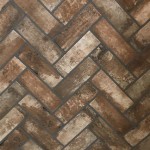Transform Your Tiles With Ceramic Tile Painting
Ceramic tile painting is a cost-effective and relatively straightforward method for revitalizing outdated or worn-looking tiles. Instead of undergoing a complete and often disruptive tile replacement, homeowners can significantly alter the appearance of their bathrooms, kitchens, backsplashes, and even floors through the application of specialized paints and techniques. This approach allows for creative expression, enabling customization beyond the limited options readily available in retail stores. The process requires careful preparation, the selection of appropriate materials, and a methodical approach to ensure a durable and aesthetically pleasing result. Understanding the intricacies of ceramic tile painting empowers individuals to undertake this DIY project with confidence and achieve professional-looking outcomes.
The appeal of ceramic tile painting lies in its ability to address specific problem areas or to create an entirely new design aesthetic without the significant expense and time commitment associated with tile removal and installation. Whether the goal is to cover up unsightly stains, update a dated color scheme, or add a decorative element, painting offers a viable alternative. Proper execution is paramount to the success of the project, necessitating attention to detail and adherence to best practices. Neglecting crucial steps can lead to premature chipping, peeling, and an overall unsatisfactory finish. This article will delve into the essential aspects of ceramic tile painting, providing a comprehensive guide to achieving lasting results.
Key Point 1: Preparation is Paramount
The longevity and aesthetic appeal of painted ceramic tiles are directly proportional to the thoroughness of the preparation phase. This stage involves cleaning, repairing, and priming the tile surface, ensuring optimal adhesion for the paint. Neglecting any of these steps can compromise the final outcome, leading to paint failure and necessitating costly repairs.
The initial step involves a comprehensive cleaning of the tiles. This is not merely a superficial wipe-down; it requires the removal of all dirt, grime, grease, and soap scum. A strong degreasing cleaner, specifically designed for bathroom or kitchen surfaces, is recommended. The cleaner should be applied according to the manufacturer's instructions, typically involving spraying the surface, allowing the solution to dwell for a specified period, and then scrubbing vigorously with a stiff-bristled brush or sponge. Rinsing thoroughly with clean water is essential to eliminate any residual cleaner, which can interfere with paint adhesion. For particularly stubborn stains or buildup, a specialized tile and grout cleaner may be necessary. It is important to wear appropriate protective gear, such as gloves and eye protection, when handling cleaning chemicals.
Following the cleaning process, a thorough inspection of the tiles and grout is crucial. Chips, cracks, or other forms of damage should be addressed before proceeding with painting. Small chips can be filled with a tile repair epoxy specifically designed for ceramic surfaces. The epoxy should be applied according to the manufacturer's instructions, ensuring that it completely fills the damaged area. Once the epoxy has cured, it should be sanded smooth to blend seamlessly with the surrounding tile surface. Cracks in the grout can be repaired with grout filler, also available at most home improvement stores. Loose or crumbling grout should be removed entirely and replaced with fresh grout. Allow the grout to cure completely before proceeding.
Priming the tiles is the final, and arguably most critical, step in the preparation process. Primer creates a uniform surface and enhances the adhesion of the paint. A high-quality epoxy primer specifically designed for ceramic tile is essential. These primers are formulated to bond strongly to the slick surface of ceramic tile, providing a stable base for the paint to adhere to. The primer should be applied in thin, even coats, following the manufacturer's instructions. Typically, one to two coats of primer are sufficient. Allow the primer to dry completely before proceeding with painting. The drying time will vary depending on the specific primer used and the ambient temperature and humidity.
Proper ventilation is crucial throughout the entire preparation process, especially when working with cleaning chemicals, repair epoxies, and primers. Open windows and doors, or use a fan to circulate air and minimize exposure to potentially harmful fumes. Wearing a respirator mask is also recommended, particularly when sanding or working with strong chemical odors. By investing the time and effort necessary to prepare the tiles thoroughly, you significantly increase the likelihood of achieving a durable and aesthetically pleasing painted finish.
Key Point 2: Selecting the Right Materials
The selection of appropriate materials is crucial for achieving a long-lasting and visually appealing finish when painting ceramic tiles. The correct paint type, application tools, and sealers are essential for ensuring durability and preventing premature chipping or peeling. Choosing inferior materials often leads to subpar results and the need for rework, negating the cost savings initially sought by painting instead of replacing tiles.
Epoxy-based paints are generally considered the best choice for painting ceramic tiles, especially in areas prone to moisture, such as bathrooms and kitchens. These paints are designed to adhere strongly to smooth, non-porous surfaces and offer excellent water resistance and durability. Two-part epoxy paints, which require mixing a resin and a hardener, provide a particularly tough and long-lasting finish. While they may be more expensive than other paint options, the investment is often justified by the improved performance and longevity. Alternatively, specialized tile paints formulated for ceramic surfaces are available and can offer satisfactory results if applied correctly. Always carefully review the product label to ensure compatibility with ceramic tile and suitability for the intended application.
The choice of application tools also plays a significant role in the final outcome. High-density foam rollers are ideal for achieving a smooth, even finish on large tile surfaces. These rollers minimize brush strokes and provide a consistent paint application. For smaller areas, intricate details, or grout lines, high-quality paint brushes with synthetic bristles are recommended. Natural bristle brushes are not suitable for use with water-based or epoxy paints, as they tend to absorb water and become limp, resulting in uneven paint application. Using painter's tape to mask off adjacent surfaces, such as countertops, cabinets, or walls, is essential for creating clean, crisp lines and preventing unwanted paint splatter. Choose a high-quality painter's tape designed for delicate surfaces to minimize the risk of damaging the surrounding areas.
Once the paint has fully cured, applying a sealant is crucial for protecting the painted surface and enhancing its durability. A water-based polyurethane sealant, specifically formulated for use over painted surfaces, is a good option. The sealant should be applied in thin, even coats, following the manufacturer's instructions. Multiple coats of sealant may be necessary to provide adequate protection, particularly in high-traffic areas or areas exposed to frequent moisture. Allow each coat of sealant to dry completely before applying the next. The sealant will create a protective barrier against scratches, stains, and water damage, prolonging the life of the painted tiles.
In addition to the paint, rollers, brushes, and sealant, other materials will be necessary for a successful tile painting project. These include sandpaper for smoothing rough surfaces or minor imperfections, drop cloths to protect surrounding areas from paint splatters, cleaning supplies for preparing the tiles, and safety gear, such as gloves and a respirator mask. Investing in high-quality materials may require a slightly higher initial outlay, but the improved performance, durability, and aesthetic appeal of the finished product will ultimately justify the expense.
Key Point 3: Application Techniques and Best Practices
Even with meticulous preparation and the selection of appropriate materials, the success of ceramic tile painting hinges on the proper application of paint and adherence to best practices. Applying the paint too thickly, neglecting drying times, or failing to address imperfections can compromise the final result and lead to premature failure of the painted surface. A methodical and patient approach is essential for achieving a professional-looking and durable finish.
Before beginning the painting process, ensure that the work area is well-ventilated and adequately lit. Proper ventilation minimizes exposure to paint fumes and allows for better visibility while painting. Adequate lighting helps to identify any imperfections or areas that may require additional attention. If possible, remove any fixtures or accessories, such as towel racks or soap dispensers, to avoid the hassle of painting around them. If removal is not feasible, carefully mask off the fixtures with painter's tape to protect them from paint splatter.
Apply the paint in thin, even coats, using a high-density foam roller for large areas and a brush for smaller areas or detail work. Avoid applying the paint too thickly, as this can lead to drips, runs, and an uneven finish. Multiple thin coats are always preferable to a single thick coat. Allow each coat of paint to dry completely before applying the next. The drying time will vary depending on the specific paint used and the ambient temperature and humidity. Refer to the manufacturer's instructions for recommended drying times. Sanding lightly between coats with fine-grit sandpaper can help to create a smoother surface and improve adhesion of subsequent coats. Be sure to remove all sanding dust before proceeding.
Pay particular attention to grout lines, ensuring that they are fully covered with paint. Use a brush to carefully apply paint to the grout lines, working it into the crevices to ensure complete coverage. If desired, you can use a contrasting color to highlight the grout lines, creating a decorative effect. However, this requires even greater precision and attention to detail. Consider using a grout pen for a more controlled application of color to the grout lines.
Once the paint has fully cured, inspect the surface for any imperfections, such as drips, runs, or missed spots. Use fine-grit sandpaper to smooth out any imperfections and touch up any missed areas with a small brush. Apply the sealant in thin, even coats, following the manufacturer's instructions. Be sure to allow each coat of sealant to dry completely before applying the next. The sealant will provide a protective barrier against scratches, stains, and water damage, prolonging the life of the painted tiles.
Regular cleaning and maintenance are essential for preserving the appearance and durability of painted ceramic tiles. Use a mild soap and water solution to clean the tiles regularly, avoiding harsh chemicals or abrasive cleaners that can damage the painted surface. Wipe up spills and splatters promptly to prevent staining. With proper care and maintenance, painted ceramic tiles can provide a cost-effective and aesthetically pleasing alternative to tile replacement.

Diy Master Bathroom Makeover How To Paint Your Tile Floors On A Budget Arts And Classy

How To Paint Tile Floors So They Last Pine And Poplar

Transform Your Floor Diy Painted Tile Makeover How To Paint A Before After

How To Paint A Tile Floor Steps For Success Artsy Rule

Painted Ceramic Tile Floors Plus A 1 Year Update The Beauty Revival

Painting My Ugly Kitchen Tile Floor With Rust Oleum Rocksolid Home Paint Tutorial

Painted Ceramic Tile Floors Plus A 1 Year Update The Beauty Revival

Transform Your Floor Diy Painted Tile Makeover How To Paint A Before After

How To Paint Tile Floor Angela Marie Made

How To Paint Tiles Transform Dated On A Budget
Related Posts








